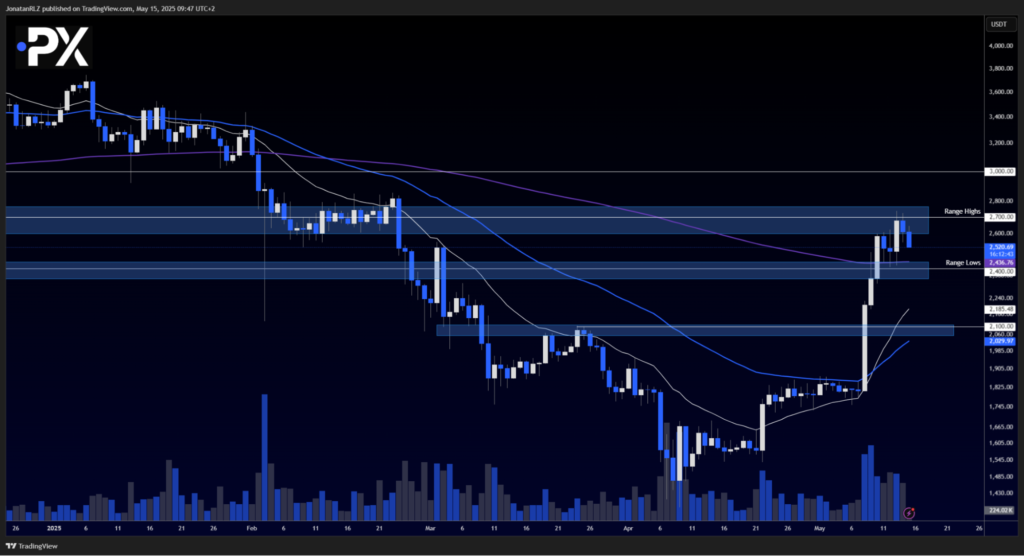Ethereum (ETH/USD) is currently trading within a well-defined range, with two clear zones now acting as key technical decision points. After testing the 2,700 dollar area mentioned in previous updates, price was rejected and has since been consolidating below that level. Meanwhile, the 2,400 zone continues to hold as a significant area of support, bolstered by the presence of the daily 200 EMA, which is currently aligned with this zone.
This range gives traders and investors a clean framework to work with. The 2,700 level acts as a high time frame resistance, and the 2,400 level acts as a key support. These two zones are now effectively the range highs and range lows for Ethereum, and both can be used as important reference points for risk management and trade validation.
If Ethereum breaks below the 2,400 support, we then turn our attention to the next high time frame level at 2,100. This is a zone that has previously held significance and could become a magnet for price if downside momentum builds.
To the upside, if Ethereum can reclaim the 2,700 resistance zone, the next area of interest is the round number at 3,000. Not only does this serve as a clean psychological level, but it also aligns with historical price structure, making it a logical target for continuation if the current consolidation resolves to the upside.
This current range gives Ethereum traders a structured environment while awaiting confirmation of the next major move.

Trade ETH
Trading involves risk.
The content provided here is for informational purposes only. It is not intended as personal investment advice and does not constitute a solicitation or invitation to engage in any financial transactions, investments, or related activities. Past performance is not a reliable indicator of future results.
The financial products offered by the Company are complex and come with a high risk of losing money rapidly due to leverage. These products may not be suitable for all investors. Before engaging, you should consider whether you understand how these leveraged products work and whether you can afford the high risk of losing your money.
The Company does not accept clients from the Restricted Jurisdictions as indicated in our website/ T&C. Some services or products may not be available in your jurisdiction.
The applicable legal entity and its respective products and services depend on the client’s country of residence and the entity with which the client has established a contractual relationship during registration.




